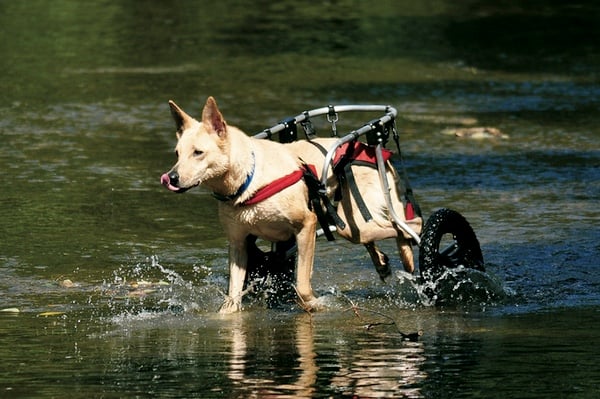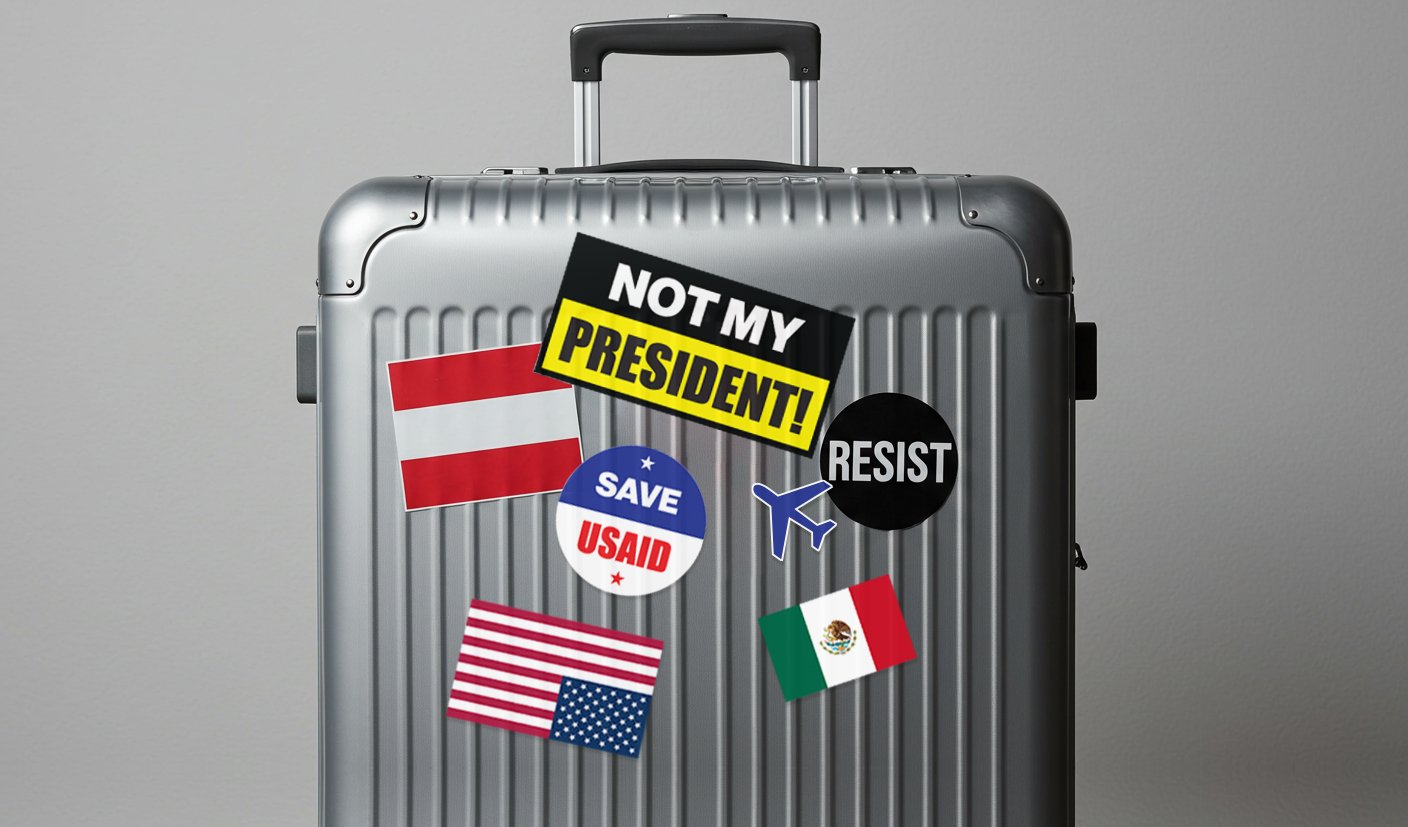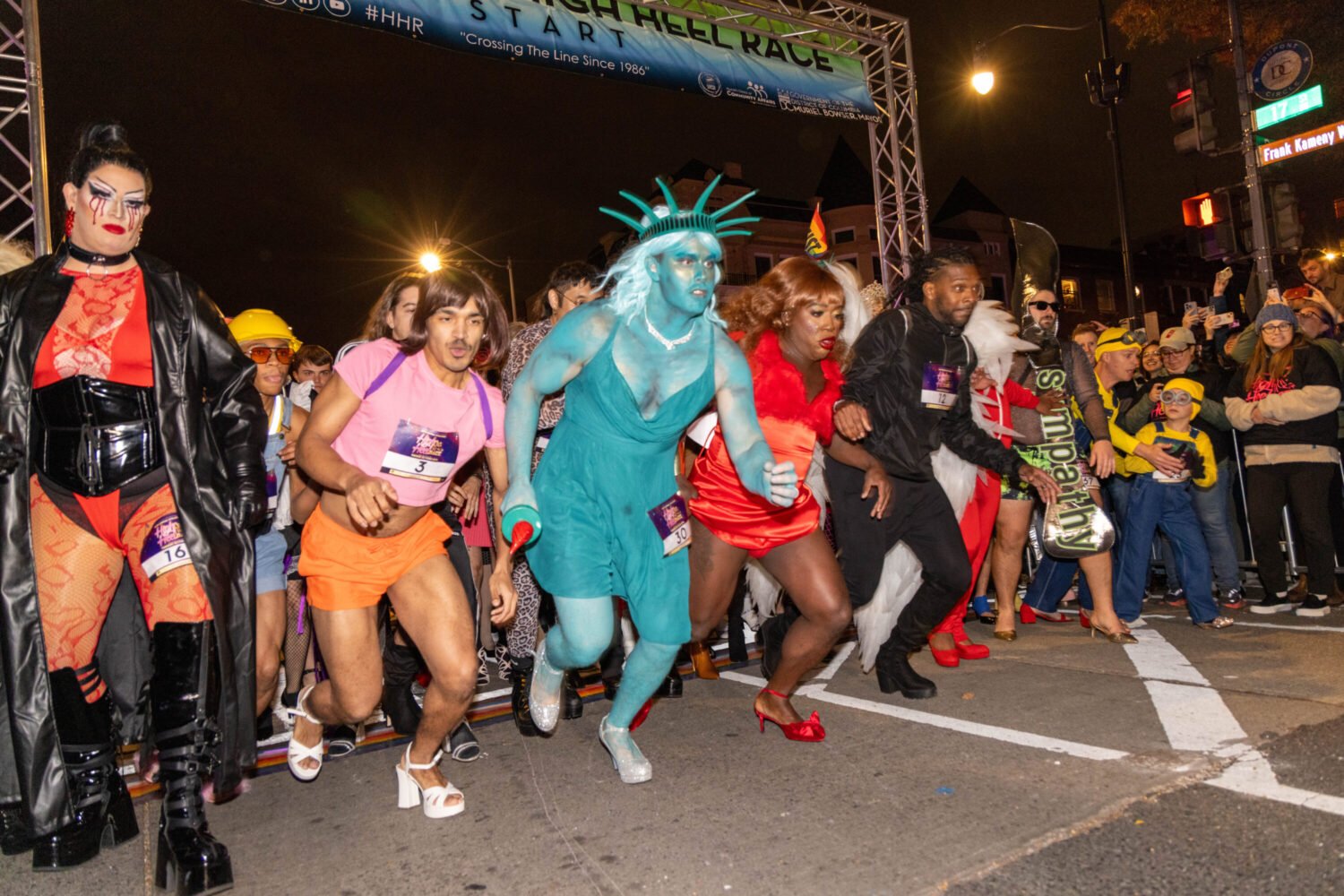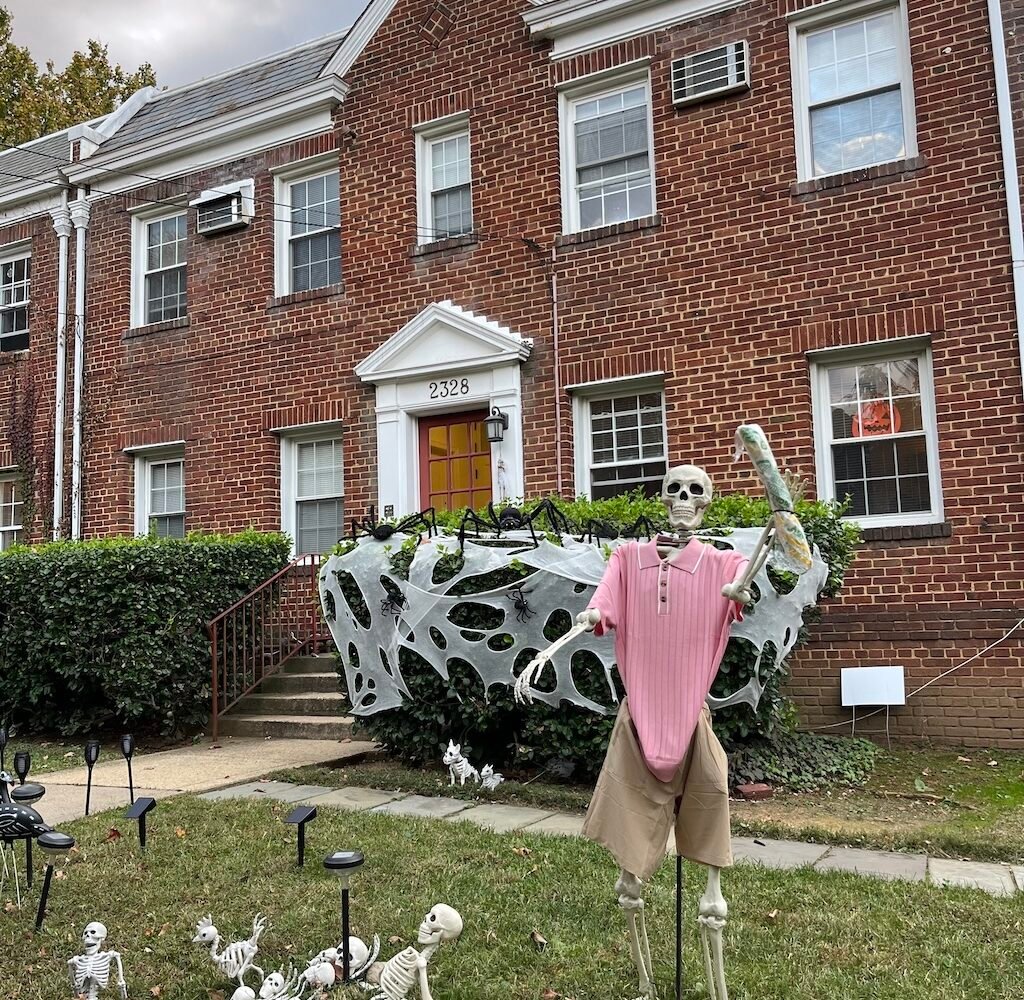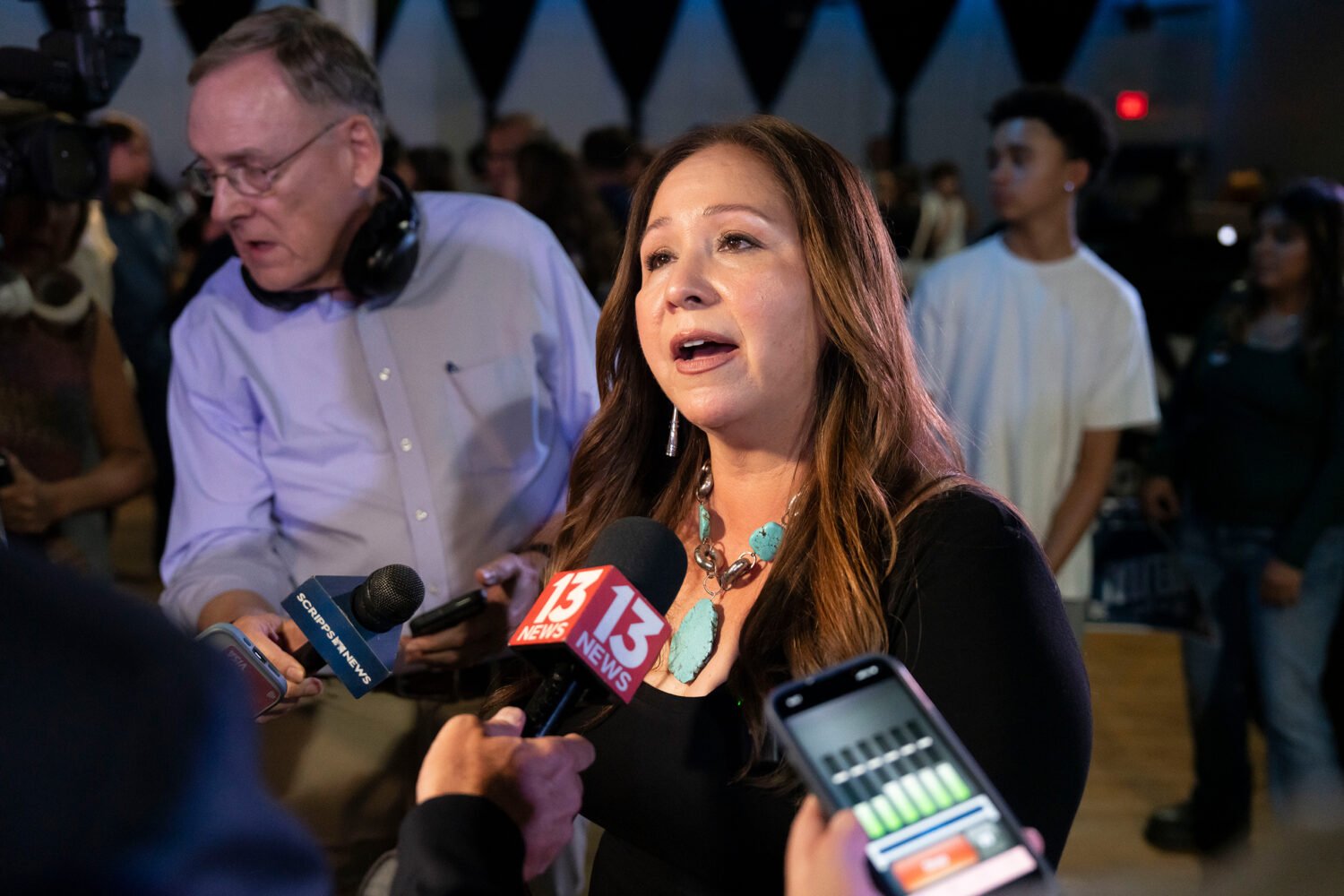Partially paralyzed, Annie still went on a summer camping trip. Photograph by Virginia Johnson
Even in her wheelchair, Annie runs so fast that Joyce Darrell swears the dog is part greyhound. Annie keeps up during daily mile-long hikes on Darrell’s wooded property.
Just a year ago, the white shepherd mix was cowering under a porch on the Caribbean island of Grenada, underweight and paralyzed from the waist down. She was nursing a litter of puppies. Annie’s owner had given her up, and she wound up at a nearby veterinary school.
A group of vet students tried to care for the dog but realized she needed more help than they could give her. They’d made the hard decision to euthanize her when one of them went online and came across Pets With Disabilities, a rescue group and sanctuary Darrell runs for handicapped animals in Prince Frederick, Maryland, an hour south of DC.
The students exchanged e-mails with Darrell, organized fundraisers to pay for plane tickets, and found a volunteer to escort Annie on her trip. By last Christmas, Annie was getting used to her new wheelchair so she could explore all 17 acres of her new home.
“She ended up in my in box on Thanksgiving eve,” says Darrell. “I looked at her picture and I was like, ‘Okay, we have to help this dog.’ ”
Darrell and her husband, Michael, share their property with anywhere from 20 to 26 dogs at a time along with a handful of cats. Most of the animals are blind, deaf, or paralyzed. The couple started the nonprofit in 2003, four years after their seven-month-old German-shepherd mix, Duke, broke his back while playing with a friend’s dog.
“Trying to find a support system, trying to find another couple who took care of a wheelchair dog was really difficult,” says Darrell, who quit her job running a gym to focus on the rescue group. “We realized there was such a need for this.”
Darrell gets up at 5:45 every morning to feed the deaf and blind dogs, including Megan, a hound discovered wandering in a Virginia lumber yard. Megan, who was born blind, is so friendly that when new dogs arrive, Darrell tests their temperament by leaving them alone with her.
Darrell’s home is handicap-accessible, helpful for dogs like Ernie, a Samoyed that lost the use of his hind legs. Ernie was two hours from being put down when Darrell rescued him from an animal hospital. Veterinarians and shelters often call Darrell for help, but she can’t accept every animal. The group’s operating costs are often more than $100,000 a year.
“A lot of shelters feel like these are dogs they can’t adopt out, so they’re the first ones to get euthanized,” says Sharon Sirkis, a volunteer with the group. “These are animals that people might think of as being throwaway—and that just isn’t the case. The love you get is different. These guys depend on you, and because they do it’s a much stronger bond.”
Darrell tries to find homes for all the cats and dogs she takes in, but adopting out animals with disabilities is challenging. Some dogs, especially those in wheelchairs, end up staying with her permanently.
Gerry Valerio, an artist in Annapolis, was following up on a friendly invitation from Darrell’s mother-in-law when he decided to visit Pets With Disabilities in June. He promised himself he wouldn’t come home with a new dog. Then he met Jack, a young shepherd mix that had lost a leg.
“He ran across the field and jumped up on my chest with his one front paw,” says Valerio. “I looked into his face and I was a goner.”
This article appears in the November 2011 issue of The Washingtonian.

